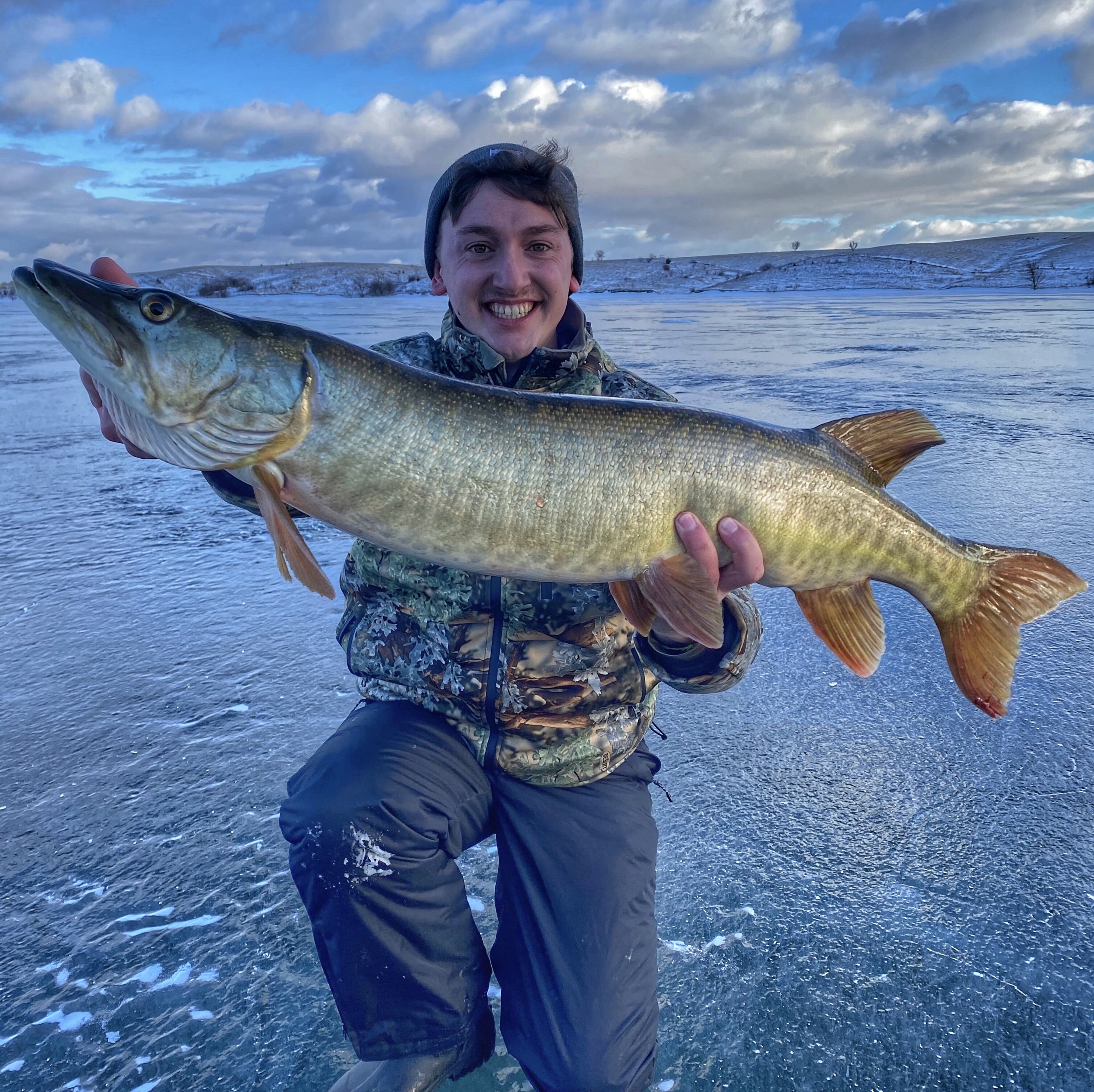The Fish Of 10,000 Casts
| We were 311 miles from Wall Drug |
I didn’t grow up ice fishing. My home waters of Spearfish Creek stayed open year-round, and my infatuation with dunking bead head nymphs while fly fishing in subzero temperatures was enough to satisfy my wanderlust in the winter months. The lack of sunshine even on the darkest and shortest winter days didn’t seem as bad with a rainbow in your hand. Sneaking swigs of cheap malt whiskey helped keep the cold at bay, and my 16-year-old self couldn’t help but feel like I was living out the pages of A River Runs Through It. Even then, when frozen eyelets became too frustrating, a winter’s day could easily be spent following lion tracks or calling coyotes. Growing up with such easy access to outdoor adventure was a blessing.
After high school, I moved to the eastern half of the state to continue my education, and the move introduced me to an entirely new outdoor landscape. The trout streams and lion filled hills of my youth quickly disappeared in the rearview, and the flat farm ground and scattered lakes of eastern South Dakota greeted me. I felt completely naive and uninitiated in the new setting, but determined to learn.
As luck would have it, my college roommates were seasoned flatlanders, having grown up chasing outdoor adventure on the lakes of Okoboji and the rivers near Yankton. When I bashfully admitted that I was an ice fishing novice, they were quick to plan an excursion on the ice where they could share their knowledge and gear.
In preparation for our day on the ice, I purchased my first ice fishing rod out of a bargain bin at a local gas station. I dug through my trout fishing tackle to find small spoons and Mr. Twisters that could double as ice fishing lures, and I filled a Big Gulp Slurpee cup with a few scoops of minnows. I might not have looked like the ice fisherman from the cover of magazines, but I was confident that I could seduce a small perch or two into biting my line. We packed like sardines into a minivan that was in the twilight years of its life, and we took the highway out of town in search of frozen waters.
Gas and electric augers were too expensive for broke college students, so we took turns racing rusty hand augers down through the thick layers of accumulated ice. The shacks we sat in looked like patchwork family heirlooms but provided a reprieve from the wind and weather. Many things in ice fishing were unfamiliar to me, but the extra layer of warmth provided by a chilled Coleman flask was one winter fishing tradition I was familiar with. It didn’t take long, and we were drowning minnows in search of South Dakota Gold.
It was easy to miss the subtle nudges of the perch below the ice, even with the finesse tips we had crudely strapped to the ends of our rods using electrical tape. Despite the missed opportunities, we caught countless perch throughout the course of the day. What the perch lacked in stature, they made up for in beautiful gold and green coloration, and I quickly realized why they were such a targeted species by fisherman across the Midwest.
I had grown accustomed to the light weight of a perch at the end of my line, and I felt myself shaken to reality as I set the hook into a fish of significant proportion. As the drag on my rod screamed against the weight and fight of the fish, my mind raced with possibilities. The obvious magnitude of the unseen fish was enough to attract the attention of several neighboring anglers, and I soon found myself fighting the fish surrounded by an audience, like a heavyweight boxing bout.
My roommates acted as ringside coaches, instructing me to keep the cheap pre-spooled fishing line from rubbing and fraying on the edges of the ice hole. My bargain bin rod offered little in the way of backbone, and the mystery fish had its way with me during the first several rounds of our fight. As time drug on, the fish’s stamina began to waiver, and I slowly gained ground. I maintained tension on the line, forcing the fish to approach the crudely drilled 8-inch hole in the ice, and we were finally able to identify my opponent as a Musky.
I began preparing myself for the inevitable pain of losing a fish of 10,00 casts. Even with the proper gear, muskies are difficult to land. Without a steel leader, and only 5lb monofilament line, there seemed to be a few too many factors stacked against my success. Each time I would get the fish closer to the hole, she would turn her head and rip drag from my line in defiance.
As time went on and our fight reached the later rounds, my frozen fingers and anxious roommates encouraged me to bring the fight to some sort of climax. As the musky neared the hole, I tightened my drag and resisted her powerful attempts at escape. Just as I was convinced my line could take no additional stress, the long arm of one of my roommates shot through the hole and latched on to my toothy opponent.
Like a late round underdog knock out, loud cheers of disbelief and excitement filled the air as the musky emerged from the cold water. Measuring just shy of 40 inches, the muskies beautiful ruby red fins set against a South Dakota blue bird sky created a strikingly beautiful scene.
With the help of close friends, a bargain bin ice fishing rod, and beginner’s dumb luck – my ice fishing initiation was one for the books. South Dakota may be divided by A River That Runs Through It, but the opportunities offered for anglers and outdoorsmen on either side can create memories that last a lifetime.

